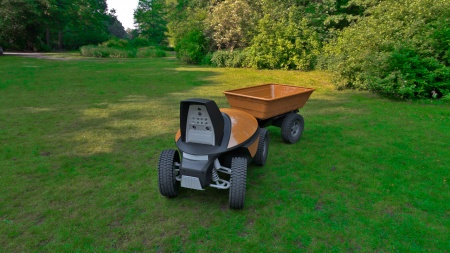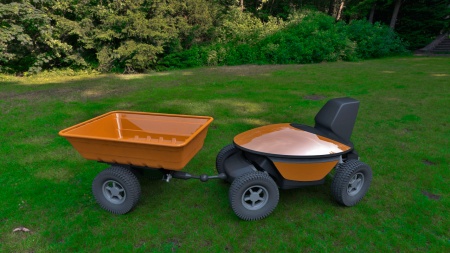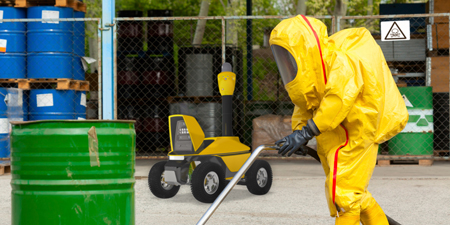Transport robots



Since early days of human civilization cargo transportation has been one of key issues. While cargos over a few hundred kilograms are now transported by machines, light items are still carried in wheelbarrows or trailers attached to a compact tractor or a quad. These ways of transportation do not seem effective when there is a need to go back and forth or cover the distance of a few kilometers, for example, to remove fallen leaves, mowing or litter.
The above tasks can be successfully performed by SRX1 and SRX3 small-sized transport robots. The robots are fitted with trailers – towing capacity up to 70 kg and up to 200 kg respectively. Both robots are equipped with electric engines that do not disturb people with noise and exhausts. Built-in accumulators have power supply sufficient for tens of kilometres running.
There are two ways to program robot’s route – to select the route on the digital map of a table PC supplied with the robot or to walk in front of the robot showing the path. The robot will move behind an operator in “follow me” mode and compile a digital map for further navigation.
Trailer for loose goods is equipped with a side dropping mechanism to allow automatic unloading without operator’s involvement.
A trailer fitted with a water tank is suitable not only for water transportation but also for watering grass and other plants. This function is particularly useful in the moderate climate with sufficient rains, where there is no need for regular watering or building a fixed irrigation system. At the same time there are periods when watering is vital. On such occasions it is convenient to use an automatic self-moving watering system designed on the basis of SRX3 chassis. 200-litre water tank is sufficient for watering 10-20 sq. m. of lawn. The robot can also be programmed to automatically refill its water tank for watering larger areas. Robot’s watering system is equipped with a pump, which allows the robot to reach distant parts of a lawn from pathways making no harm to the grass.
A particular advantage of wheeled robots is their full autonomy – they are capable of passing along preselected routes and performing specified tasks without operator’s involvement.
